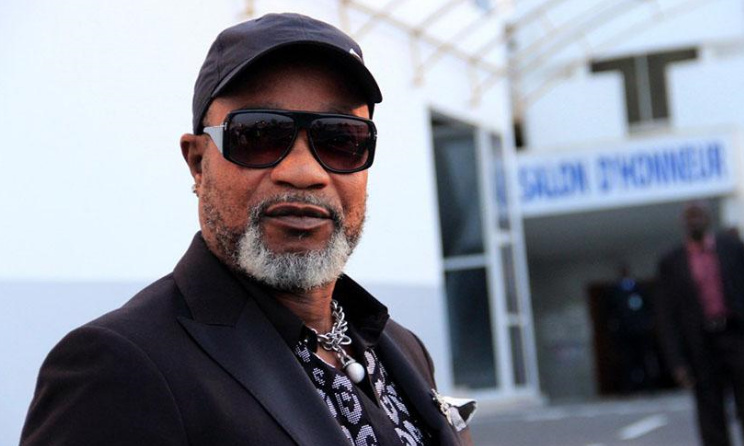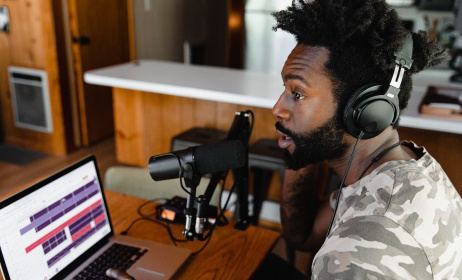How rumba and benga influenced each other
On any given Sunday on the streets of an East African town, a Congolese sound moves the crowd. Its tunes and rhythms have ruled Africa for decades and permeated African music so deeply that they now define it. Although the Congolese sound is now arguably one of the the biggest musical influencers in East Africa, it too has been heavily influenced by various African genres, most notably Kenya's benga.
 Congolese soukous singer Koffi Olomide.
Congolese soukous singer Koffi Olomide.
East African musicians have been interacting for decades now, blurring musical boundaries. Today, many contemporary hitmakers have a touch that can be distinctively identified as Congolese. Ali Kiba's 'Mwana', Christina Shusho's 'Napokeo Kwako' featuring Kenya's Janet Otieno and numerous other East African musicians all exhibit the rhythmic fingerstyle associated with the Congo.
“Congolese music didn’t influence Kenyan music, it was the other way around," veteran Kenyan radio presenter Fred Obachi Machoka tells Music In Africa. "The Congolese rumba is more laid back. It borrows heavily from the Cuban rumba. In contrast, benga is a faster dance beat. The benga influence becomes clear when you listen to the transition between Congolese rumba and soukous. Nonetheless, I do admit that though the Congolese originally copied from us, they were more creative in developing their sound.”
Machoka has hosted some of Kenya’s most popular TV and radio shows over the last 40 years. He asserts that in the late 1950s and '60s, Congolese rumba and Kenyan benga existed parallel to each other. Iconic Congolese musicians like John Bosco Mwenda and Edouard Masengo, who lived and played in Kenya, stayed true to Congolese rumba. They sometimes sang in Swahili to contextualise their music to the Kenyan audience, but their music remained rumba.
Although the evolution of benga is largely attributed to Nairobi, Luo benga is thought to be its earliest variant. According to The History of Benga Music: A Report by Ketebul Music, the traditional benga sound is about 60 years old. Its roots run deep in age-old Luo instruments: the winding, mournful sound of the violin-like orutu and the nyatiti, an eight-stringed traditional lyre. These instruments were substituted by the guitar, which kept the original character of Luo music. Similarly, the rhythmic thumping of an iron ring that nyatiti players place on their toe is closely associated to the percussive signature on modern benga.
Kenyan benga luminaries such as George Mukasa and Ochieng Nelly recorded their up-tempo and rhythmic music in the late 1950s and early '60s. Though the fingerstyle was similar to Congolese rumba at the time, the difference was in the rhythmic and percussive nature of benga.
In the 1970s and '80s soukous became the popular style in Congo. The likes of African Fiesta, Papa Wemba and Pépé Kallé all delved into upbeat dance music. Soukous bears the traits of its predecessor, Kenyan benga. For this reason, the Congolese sound is said to have Kenyan roots. Congolese guitarist Syran Mbenza and vocalist Nyboma have both acknowledged that benga inspired the modern sound of Congolese music.
Congolese soukous hit singles like Pépé Kallé’s 'Roger Milla' and Kanda Bongo Man’s 'Inde Monie' all bear the distinctive rhythmic and percussive elements of benga. George Mukabi’s 'Asante Kwa Wazazi', 'Furaha Wenye Gita' and 'Mtoto si Nguo', which were all recorded in the late 1950s and early '60s, also fall under this category.
Other genres followed in the path of soukous, which evolved from one to the next. Artists who progressed the genre include Dany Engobo, Awilo Longomba, Aurlus Mabele, Mav Cacharel and Koffi Olomide as well as groups like Extra Musica and Wenge Musica, among others.
As the Congolese sound has evolved over the years, musicians have continued to experiment and fuse it with genres from all over the world. They may have borrowed heavily to create their sound but what they eventually developed was uniquely Congolese.
“Rumba came to East Africa after World War 2," Kenyan musicologist and Ketebul Music boss Tabu Osusa says. "Kenyans like Fundi Konde and Congolese like Wendo Kolosoy did rumba. In Congo, however, they took it and made it their own, like John Bosco Mwenda, who brought the fingerpicking style to Kenya and it was adopted by some of the benga pioneers like George Mukabi.”
Dan Aceda, the self-proclaimed 'Crown Prince of Benga', is on a taxonomical expedition to discern the many sounds that define African music. The Kenyan musician’s journey has seen him evolve his own style from hip hop, Afro-fusion to benga. In his opinion, the dominance of Congolese music was government-driven. Under ousted DRC president Mobutu Sese Seko, the government funded fervent cultural policies. Aceda argues that this funding facilitated musicians to explore new music, which gave them a head start on musicians in most other neighbouring countries.
Aceda believes government support gave musicians credibility and status, which helped them grow their popularity.
"We don't need government funding," he said. "As artistes we just need the government's support. Look at how much Sauti Sol and Emmy Kosgei blew up after they were seen dancing with President Uhuru Kenyatta. In his day, president Daniel arap Moi made choirs a thing because he loved them and he paid to be entertained by them. That is why we still have choirs at every national event. Association with power creates influence and that is what we really need."
The origin of a genre is always a contentious issue: as cultures interact they borrow from each other. Congolese music is no exception. It has been impacted by African music almost as much as it has shaped Africa's sound. However, what cannot be contested is that East Africa truly loves the Congolese.





























Commentaires
s'identifier or register to post comments